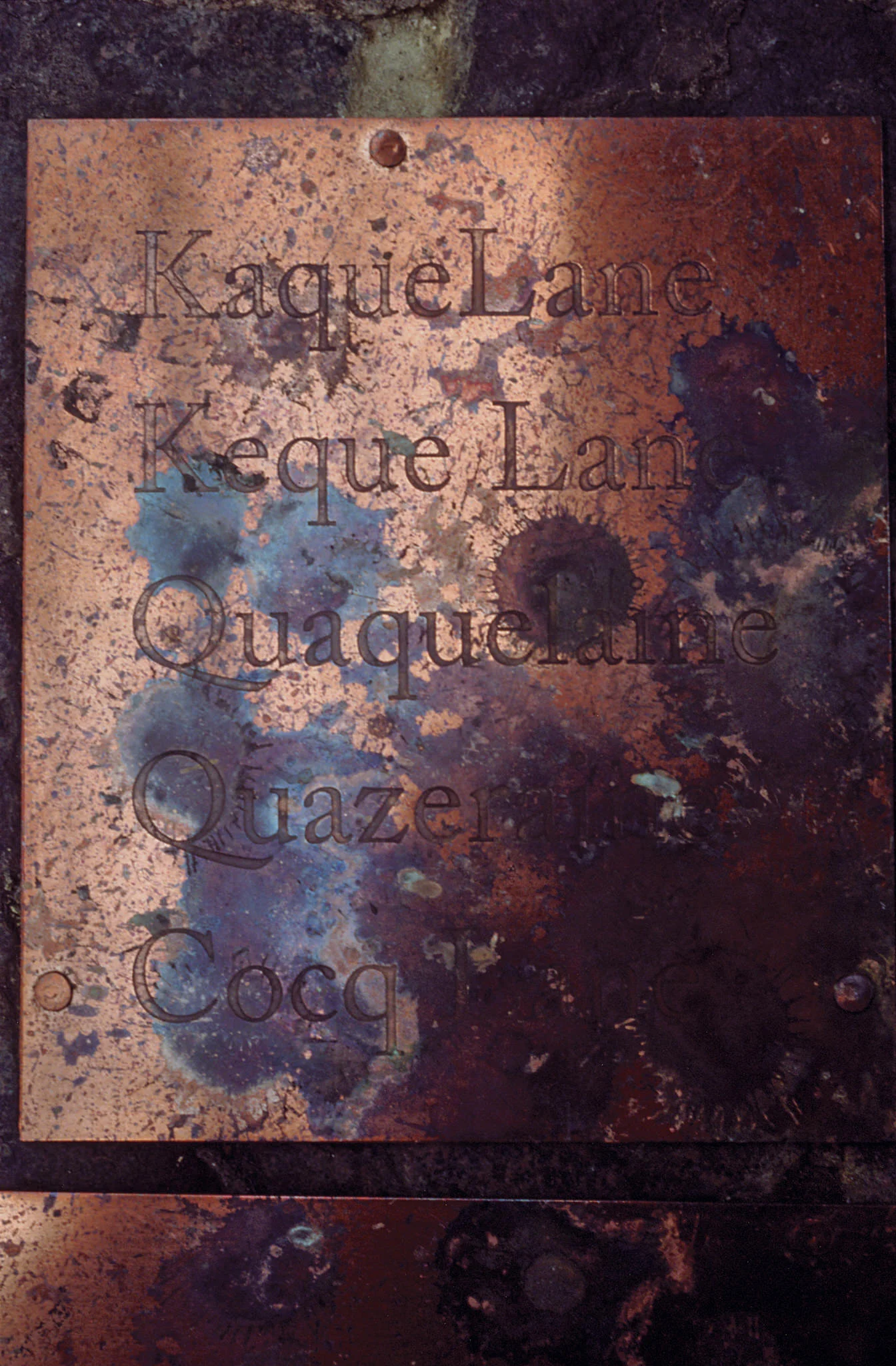Correspondence
Correspondence
Whitechapel Open, Old Spitalfields Market, London E1,
19 June - 5 August 1992
Etched copper sheets, 220 x 280 cms approximately
I was invited with other artists to make work for the Whitechapel Open in a site out of the gallery: Spitalfields Market which was in limbo, no longer functioning as a market and awaiting redevelopment. Having initially viewed the whole site to choose a location, the area for installing work was then circumscribed, being in only one half of the floor space.
I feel a quite profound connection with the area having lived locally and walked all over this part of London from 1982 - 1989. I changed my proposal and decided whatever I made would work in relation to what was fundamentally there - the ground beneath my feet, which materially was a combination of patches of granite setts and tarmac. I chose a location on the edge of the site which had an unbroken patch of setts and an adjoining smaller area of them, and then scrubbed them clean.
The piece was concerned with the assimilation and/or integration of people moving to Britain and how this is registered through language. It was a floor-based map of copper plates etched with street names taken from letters written to Huguenot migrants from their relatives still living in France. I had sometimes felt a collapsing of time when walking the local streets whose layout had changed so little over several centuries. I was retracing the footsteps of some of my own ancestors who had navigated this very area, drawn to Britain, like so many others, because of religious intolerance. Two of the copper plates reproduce letters written in French and sent to these family members who were living in ‘Cocq Laine au faubourg bischosgaitte proche yoreq streete’. The font of the street names is Caslon, cited as the first original English typeface, designed by William Caslon in 1722 and therefore almost contemporary with the correspondence; one letter dates from 1695.
Brick Lane was my local shopping street and I was always struck by the slight modifications in spelling which showed a variable grasp of some written aspects of speech: 'casette' and 'cassete' for example. Until the eighteenth century the English language was not entirely fixed in a uniformly accepted spelling of words, and approximations and mutations of the same word were common. This flexibility, so alien in my own education and upbringing appealed very much to me and when I started to research street names in Spitalfields I found multiple spellings of them in a poetic transliteration of English and French. I could imagine a relative in France writing to someone in London, rolling their tongue round what they had heard as the street name: Bricklihen, Pietrefilz, Quaquelaine.
When the copper plates were installed they were polished and highly reflective, small pools of warm light. By the end of the show they had acquired a beautiful patination from oxygenation plus the addition of BMX bike tyre marks and stunning purplish blooms from Coca Cola being spilt over them. They had almost no reflectivity at all and so I could say the piece had succeeded (too well?) in both its assimilation and integration, each a difficult state for personal identity and for art, which can result in partial outward invisibility.
('Too well' refers wryly to the fact that in an attempt to corral the art into one visible zone for art visitors and to defend it from the BMX bikers who had been given a bikepark nearby in the market, red and white security tape was wrapped around the perimeter of the works, most of which were three-dimensional sculpture. Mine, on the ground, was not part of the obviously visible 'landscape' (and therefore not seen? ignored?) and was not included within the security cordon, its integration into the surface of the place ensuring its near-invisible assimilation.)










